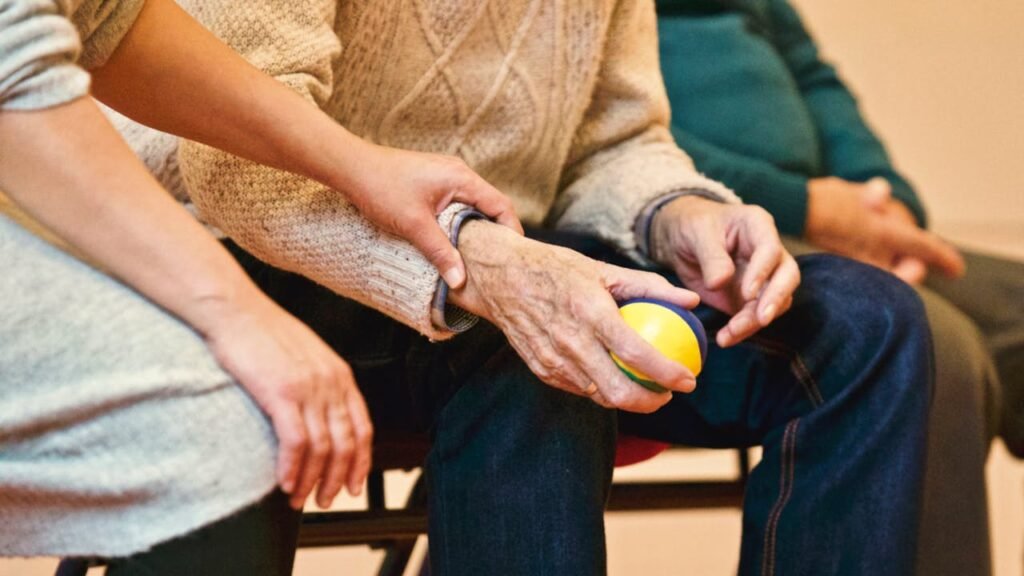Walking is one of life’s simplest joys. But after losing a limb, taking those steps again can feel unfamiliar—sometimes uneven, sometimes tiring, and often a little frustrating. For seniors using lower-limb prosthetics, learning to walk smoothly again is both an art and a process. Every stride is a balance between your body, your prosthesis, and your confidence.
At RoboBionics, we’ve walked beside hundreds of seniors across India as they relearn their natural rhythm. We’ve seen how small gait corrections—tiny adjustments in posture, balance, and timing—can completely change how someone feels on their feet. The right techniques don’t just improve how you move; they restore independence, ease, and pride.
This article is a detailed, step-by-step guide to identifying and fixing common gait issues for senior prosthetic users. It’s written in simple words, filled with practical advice you can try at home or during therapy. Whether you’re new to walking with a prosthesis or have used one for years, these insights will help you take smoother, safer, and more confident steps every day.
Understanding Gait and Prosthetic Movement
What Gait Really Means
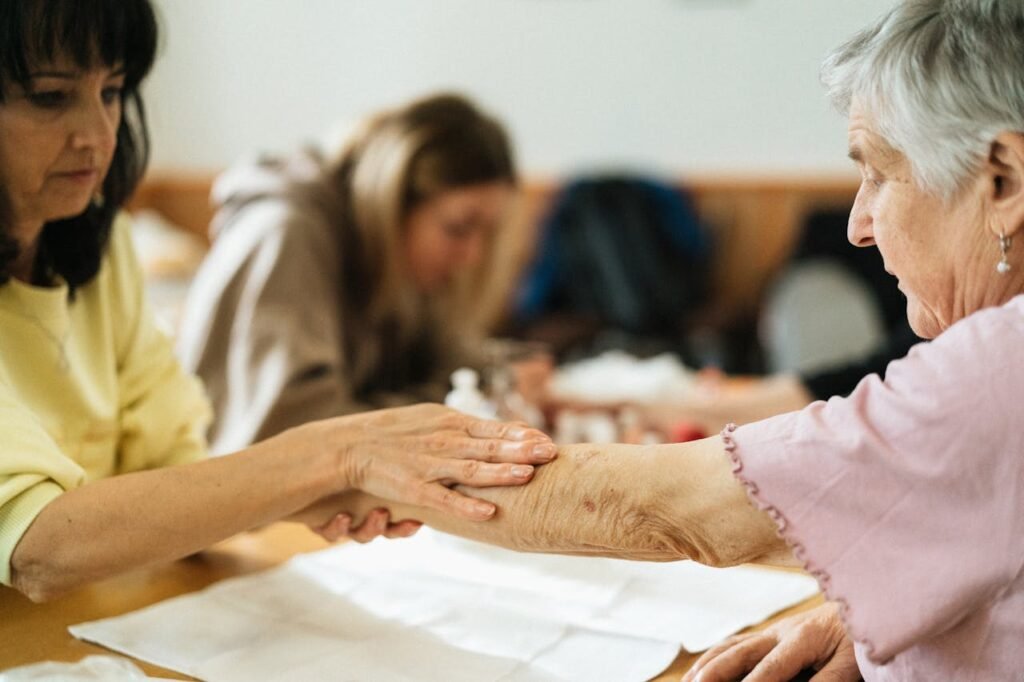
Gait simply means the way you walk—your rhythm, balance, and how each step flows into the next. It’s more than just movement; it’s your body’s way of staying stable and coordinated with every stride.
When you walk naturally, hundreds of tiny adjustments happen without you noticing. Your muscles, joints, and brain communicate constantly, making sure your body stays upright and balanced.
After an amputation, this natural rhythm changes. Your body must relearn how to balance and move with a prosthesis, which behaves differently from your natural limb.
How Prosthetics Change Walking Patterns
A prosthetic leg doesn’t provide the same automatic feedback that your real limb once did. It doesn’t send sensations of pressure, position, or movement to your brain. That means your muscles and balance centers must work harder to stay coordinated.
You may notice early signs like uneven steps, fatigue after short walks, or leaning toward your sound leg. These are normal at first, but if left uncorrected, they can lead to long-term strain.
With practice and the right adjustments, your body adapts. You learn to trust your prosthesis as part of yourself, not just a tool.
Common Gait Challenges in Seniors
Age brings natural changes—slower reflexes, weaker muscles, and reduced joint flexibility. Combine that with a prosthetic leg, and walking can feel doubly challenging.
Some seniors take shorter steps on their prosthetic side, causing imbalance. Others swing their hip too much or walk with a slight limp to compensate. Over time, these habits can cause back pain, knee discomfort, or uneven wear on the prosthesis.
The good news is that most gait issues can be corrected with awareness and practice. Every small improvement creates smoother movement and greater confidence.
Preparing the Body for Better Gait
Posture as the Foundation
Good walking begins with posture. Stand tall, with your head up, shoulders relaxed, and chest open. Keep your weight evenly distributed between both legs.
When posture is upright, balance improves automatically. Your spine supports your body better, your steps become lighter, and your prosthesis aligns correctly with your natural leg.
Slouching or leaning toward one side may feel comfortable at first but puts strain on your joints and makes walking harder. A straight, relaxed posture is your best starting point for every session.
Gentle Warm-Up Movements
Before walking practice, loosen your joints and warm your muscles. This reduces stiffness and prevents fatigue.
Begin with shoulder rolls, gentle neck turns, and arm swings. Then move to your hips and legs—lift your knees slowly, rotate your ankles, and flex your toes.
If your prosthesis allows, practice slow weight shifts from side to side. These simple movements awaken your balance and prepare your body for smoother motion.
Warm-ups don’t need to be long—just five to ten minutes of movement can make walking practice easier and safer.
Setting Up a Safe Practice Space
Choose a flat, open area where you can walk without obstacles. If you’re indoors, clear clutter and make sure the floor isn’t slippery.
Have a sturdy support nearby—like a wall or railing—especially if you’re still regaining balance. Good lighting helps you see where your prosthesis lands, preventing missteps.
Wearing supportive shoes or walking barefoot on a firm mat provides stability. Avoid soft carpets or uneven outdoor paths until you feel ready.
Your practice space should feel calm, open, and safe—because confidence begins with comfort.
Step-by-Step Gait Fixes for Everyday Walking
Step 1: Finding Equal Weight Balance
Many seniors instinctively favor their natural leg. They shift most of their weight onto it, leaving the prosthetic side lighter. This creates uneven walking patterns and fatigue.
Stand tall and slowly transfer your weight from your sound leg to your prosthetic leg. Feel both feet pressing into the ground equally. Hold for a few seconds, then return to center.
This simple balance exercise trains your brain to trust both sides. With time, equal weight distribution becomes natural.
Step 2: Checking Your Stride Length
An uneven stride is one of the most common gait issues. Often, the prosthetic step is shorter or slower than the natural one.
To correct this, start by walking along a line or hallway. Focus on taking smooth, equal steps with both legs. Don’t overthink speed—just match distance and rhythm.
Your steps should feel light and natural, not forced. The smoother your stride, the less pressure your joints will feel.
Step 3: Correcting Hip Swing and Rotation
When walking with a prosthetic leg, some seniors tend to swing the hip outward to move the leg forward. This happens when the prosthesis feels heavy or alignment isn’t correct.
Instead, focus on using your thigh and glute muscles to guide your prosthesis straight ahead. Imagine your hips moving forward in one smooth line—not side to side.
If hip swinging continues, your prosthetist may need to check the socket fit. Even a small alignment correction can make walking smoother and easier.
Step 4: Practicing Heel-to-Toe Movement
Natural walking follows a rhythm—heel first, then roll to the toe. Many prosthetic users place the entire foot down flat, missing this flow.
Practice walking slowly while focusing on landing gently on your heel, then rolling through to your toes. This reduces shock on your joints and makes your walk look more natural.
If your prosthesis has limited ankle flexibility, your physiotherapist can show you adjustments to simulate that rolling motion safely.
Step 5: Controlling Speed and Step Timing
Fast walking can cause imbalance, while overly cautious steps break your rhythm. The goal is a steady, even pace that matches your comfort.
Try counting softly to keep rhythm—one step on “one,” the next on “two.” This builds timing and control.
Once you find your rhythm, walking becomes less mechanical and more fluid. Confidence grows when your body feels the beat of its own movement.
Correcting Posture During Walking
Keeping the Head Up
Many seniors tend to look down while walking to monitor their prosthesis. While understandable, this habit affects posture and throws off balance.
Keep your gaze slightly ahead instead. Trust your body to sense the ground beneath you. Looking forward keeps your spine straight and your movements coordinated.
It also improves confidence—walking upright shows your body and mind that you are in control.
Aligning the Shoulders and Hips
Your shoulders and hips should move together, not independently. If one shoulder drops or one hip twists, your gait becomes uneven.
Stand in front of a mirror or record yourself walking. Notice if one side dips or shifts more than the other.
Imagine drawing a straight line from your shoulder down to your hip. Keeping that alignment during walking brings balance and symmetry to your gait.
Engaging the Core for Stability
Your abdominal and back muscles—your core—play a major role in walking stability. A weak core causes wobbling or leaning while moving.
Practice sitting or standing tall and gently tightening your stomach muscles as you breathe. This small engagement keeps your upper body steady and your movements grounded.
You don’t need heavy workouts to strengthen your core—just consistent awareness while walking.
Maintaining Relaxed Arms and Hands
Tension in your arms often shows up as stiffness in your walk. Keep your hands relaxed and let your arms swing naturally.
If you use a cane, hold it gently—just enough for support, not pressure. Your grip should feel easy and flexible.
Relaxed arms balance the body’s rhythm and make walking feel effortless.
Strengthening Muscles That Support Better Gait
Focusing on the Hips and Thighs
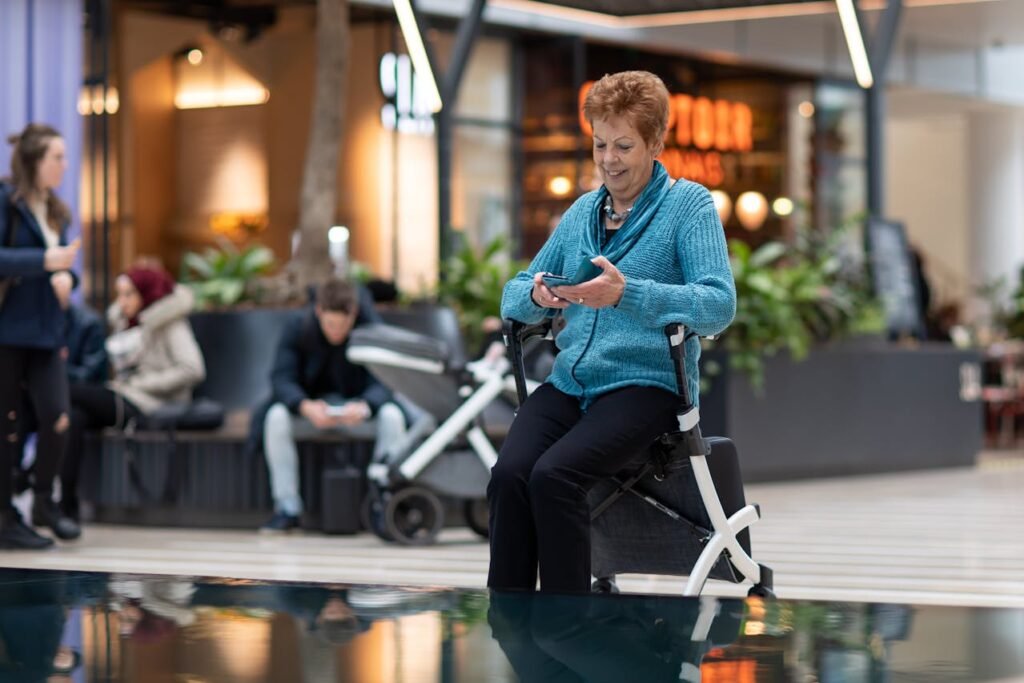
Strong hips and thighs stabilize every step. These muscles control how your prosthesis moves and absorb pressure when walking.
Try simple seated leg lifts, gentle squats, or side leg raises if your doctor allows. Even standing from a chair slowly and sitting back down strengthens the same muscles used for walking.
Strong legs make every step feel more powerful and secure.
Strengthening the Core and Lower Back
Your lower back and abdominal muscles keep your upper body aligned. Without their support, your walk may tilt or sway.
Practice gentle seated twists, slow forward bends, or breathing exercises that engage your stomach. A strong core gives your body balance and endurance.
This strength helps prevent fatigue and improves confidence during longer walks.
Building Ankle and Knee Control
Even if your prosthesis replaces the lower limb, your remaining joints play an essential role in movement.
Flex your ankle, point your toes, and practice light bending of your knee if possible. For prosthetic users, mirror the same motion on your artificial limb to train your brain for symmetry.
Controlled joint movement ensures smoother coordination between your natural leg and your prosthetic one.
Improving Balance Through Small Challenges
Balance doesn’t come from big movements—it grows from subtle awareness. Try shifting weight slightly forward and backward while holding a stable surface.
Close your eyes for a few seconds to improve internal balance sensing. Just make sure someone is nearby for safety.
These small drills strengthen the inner reflexes that protect you from stumbles and falls.
Advanced Gait Correction Techniques
Recognizing and Fixing Common Walking Mistakes
Even experienced prosthetic users develop habits that affect how they move. Sometimes, these habits form without noticing—perhaps to avoid pain or adjust for weakness.
One common mistake is overstepping with the sound leg. It makes your prosthetic side work harder to catch up, creating uneven rhythm. Slow down your walk and match the length of both steps.
Another issue is leaning too much on the prosthetic leg. This can make your stride stiff and drain energy. Keep your upper body centered, using gentle balance through both hips.
If your walking feels off, ask someone to watch you walk from the side. They can often spot imbalances you don’t feel. Small corrections like these build smoother coordination and prevent long-term strain.
Mirror Walking for Self-Correction
A mirror is one of the most powerful tools in gait training. It lets you see what your body is doing instead of guessing.
Stand in front of a full-length mirror and walk slowly toward it, focusing on your alignment. Notice if your shoulders tilt, if one hip lifts too high, or if your steps are uneven.
Practice correcting what you see—straighten your posture, match your stride, and adjust your arm swing.
This visual feedback helps your brain form better walking patterns over time. It’s simple, effective, and can be done daily at home.
Using Marked Path Drills
Marked path drills teach consistency and help correct step length and direction.
Place small markers or tape strips on the floor in a straight line, spaced evenly about one foot apart. Walk along the path, aiming to step on or between each mark with equal distance.
This exercise trains rhythm and coordination, helping you build an even, confident gait. It also prevents overreliance on one side of the body.
You can gradually increase the spacing as your control improves.
Practicing Turns and Direction Changes
Turning with a prosthetic leg can feel tricky at first. You might notice slight hesitation or fear of losing balance.
To practice, start by turning slowly in small arcs rather than pivoting sharply. Always turn toward your sound leg—it provides better stability.
As you turn, keep your steps short and controlled. Imagine drawing a circle with your feet while keeping your posture upright.
With practice, turning will feel smoother and more natural, especially in tight indoor spaces.
Outdoor Gait Adjustments
Preparing for Uneven Ground
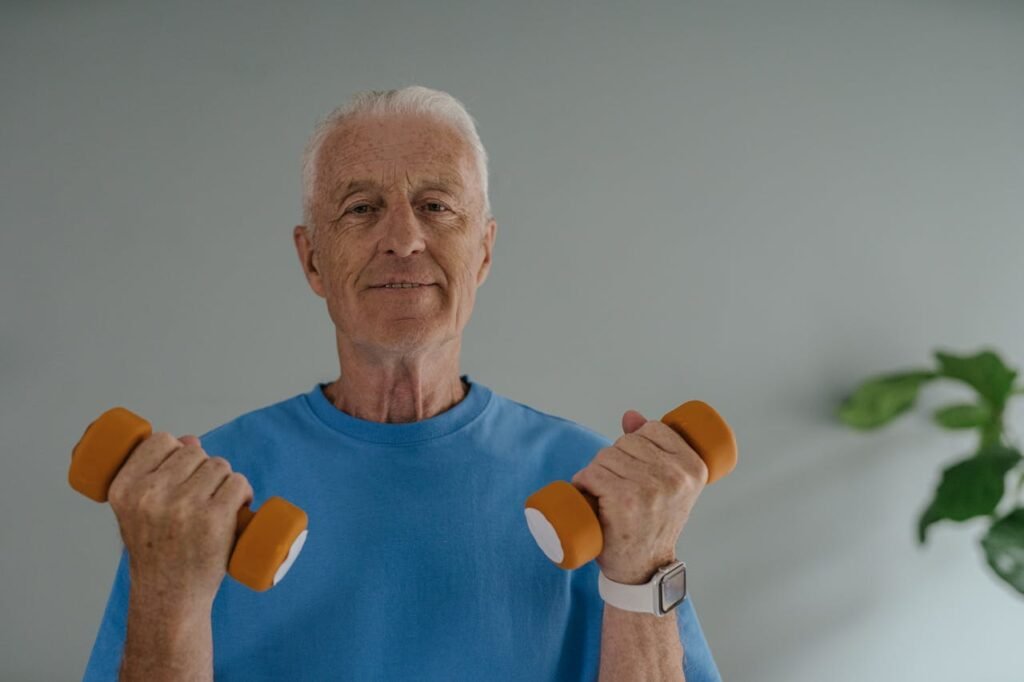
Outdoor walking brings real-life challenges—curbs, grass, gravel, and slopes. The key is learning to adapt without fear.
Start in safe environments like your garden or a quiet lane. Move slowly and use your cane or railing for added confidence. Let your prosthetic foot land firmly before transferring weight.
If you feel unsure, pause, rebalance, and take your next step when ready. Confidence comes from control, not speed.
As you gain stability, try walking on slightly uneven paths to improve your adaptability. This prepares you for real-world mobility.
Handling Curbs and Steps Safely
Steps require careful planning. Always lead with your sound leg when going up, and with your prosthetic leg when coming down.
Before stepping, place your foot or cane firmly and ensure balance before lifting the other leg. Never rush, especially when stepping off curbs or stairs.
If you use railings, hold them lightly for balance rather than pulling your weight upward.
Practicing with a physiotherapist first helps perfect your technique before trying it independently outdoors.
Managing Slopes and Inclines
Inclines change how your body distributes weight. Going uphill requires a slight forward lean; going downhill requires a gentle backward lean.
Keep your steps short and steady, ensuring your prosthesis touches down securely before shifting weight.
If your prosthetic knee locks or feels unstable, ask your clinician to adjust the knee resistance. Small tuning changes can make uphill and downhill walking smoother and safer.
Adapting to Crowded or Noisy Spaces
Busy areas can make even confident walkers nervous. Distractions or uneven pacing from others can break your rhythm.
The key is focus. Keep your gaze ahead, maintain your step pattern, and ignore sudden movements around you. If you feel rushed, step aside safely and pause.
Confidence means moving at your own rhythm, even when the world around you moves faster.
Improving Gait Through Strength and Endurance
Building Muscle Endurance
Smooth gait requires stamina. Weak muscles tire easily, which leads to uneven steps and balance loss.
Focus on exercises that build endurance in your legs, hips, and core. Gentle squats, seated marches, or standing weight transfers improve both strength and coordination.
Start with a few minutes daily and slowly increase duration as your body adapts. Endurance allows you to walk longer distances with comfort and ease.
Stretching for Flexibility
Flexibility keeps your joints supple and prevents stiffness that disrupts walking flow.
Each morning or after walks, stretch your hamstrings, calves, and hip muscles gently. Breathe deeply as you stretch, never forcing your body into pain.
Flexibility ensures smoother prosthetic motion and reduces the chance of injury from tight muscles.
Practicing Core Control
Your core supports every step. It stabilizes your spine, controls balance, and helps guide your prosthetic leg naturally.
Practice light seated or standing exercises where you tighten your stomach muscles gently while breathing. Over time, this awareness improves posture and walking precision.
A strong, steady core makes you feel more confident with every stride.
Rest and Recovery
Rest is part of your training. It allows muscles and joints to recover and rebuild.
Take breaks between walking sessions and avoid overexertion. If your residual limb feels sore, check your prosthesis for pressure points or alignment issues.
Balanced effort and rest prevent fatigue and help maintain consistent progress.
Safety Practices for Gait Training
The Importance of Awareness
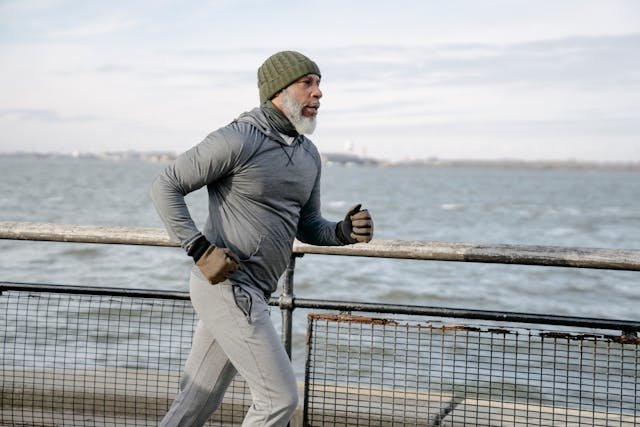
Awareness is your first layer of safety. Always pay attention to how your body feels while walking—tightness, fatigue, or imbalance are signals to slow down or stop.
Avoid multitasking while walking, like checking your phone or turning quickly. Keeping your focus on your steps reduces accidents and builds confidence.
Over time, this awareness becomes instinctive—you’ll automatically sense when your gait feels right or needs adjustment.
Using Support Wisely
Support devices like canes, walkers, or railings are valuable tools during training. But they should assist, not replace, balance.
Use your cane on the opposite side of your prosthesis to share weight evenly. For walkers, make sure it’s adjusted to the correct height so your arms stay relaxed.
As your strength grows, aim to reduce reliance gradually under professional guidance.
Footwear and Prosthetic Maintenance
Proper shoes enhance stability. Choose shoes with firm soles and good grip but avoid those with high heels or uneven bases.
Regular prosthetic check-ups are equally essential. Misalignment or worn components can affect gait and cause discomfort.
Inspect your socket fit, liners, and straps regularly. A comfortable, well-maintained prosthesis moves with your body seamlessly.
Knowing When to Rest or Seek Help
If walking suddenly becomes painful or your prosthesis feels off balance, stop immediately. Rest and evaluate before continuing.
Persistent pain, skin irritation, or clicking sounds from your prosthesis are signs to visit your prosthetist.
Addressing small issues early prevents bigger challenges later and keeps your gait healthy and safe.
Long-Term Strategies for Independent Walking
Building Confidence Step by Step
Confidence grows through repetition. The more you walk, the more your body learns to trust its rhythm.
Start with short, frequent walks and gradually increase distance. Celebrate small victories—each successful step strengthens your belief in your ability.
Confidence doesn’t come from speed or perfection; it comes from knowing you can handle whatever surface lies ahead.
Integrating Walking into Daily Life
Make walking part of your routine. Move while doing daily chores, stroll indoors after meals, or take brief walks outdoors in the morning sun.
These small moments keep your body active and your gait natural. Regular motion prevents stiffness and strengthens muscle memory.
When movement becomes part of your day, it stops feeling like therapy and starts feeling like life again.
Staying Connected with Professionals
Even after achieving independence, continue regular checkups with your prosthetist and physiotherapist.
They can fine-tune your gait as your body changes with age or as your activity level increases. They also keep your prosthesis in top condition for long-term comfort.
Your success is a shared journey—staying connected ensures you always have support when you need it.
Embracing Freedom and Comfort
Smooth gait means more than physical movement—it’s emotional freedom. It means being able to walk where you want, when you want, without hesitation.
Every correction, every small drill, every patient step adds up to that freedom. With time, your walk will feel effortless—like the world is opening up one stride at a time.
At RoboBionics, we believe walking confidently is not just a skill; it’s a right. Our advanced lower-limb prosthetics are designed to make movement natural, balanced, and comfortable.
We’ve seen seniors across India regain not just their steps, but their independence and joy of life. You can, too.
If you’re ready to experience smoother movement and better gait alignment, we invite you to schedule a demo session with our experts at robobionics.in/bookdemo.



